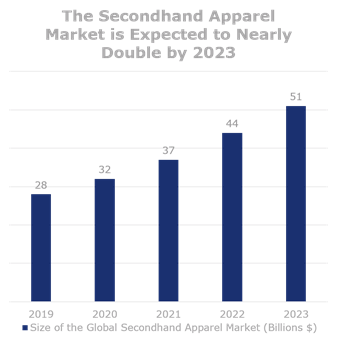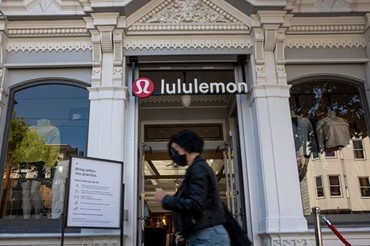Nike and Lululemon Dive into the Booming Resale Market
In honor of Earth Day, we comment on how leading brands are expanding the global opportunity of sustainability in retail to include a strategic focus on the increasingly relevant resale market.
This week’s Earth Day celebration has inspired many retailers to release statements centering on sustainability initiatives – especially those that address and enhance the second-hand market that extends the product’s lifecycle. Just this past week has seen the announcements of Nike’s Refurbished program for pre-worn footwear and Lululemon’s Like New trade-in initiative for gently worn apparel. Both of these programs center on refurbishing and reselling premium fashion products in owned channels and have entered in-store pilots in select markets as part of a push toward greater sustainability. And at an upstream level, Patagonia—the sustainability champion known for its successful Worn Wear resale program—announced it will no longer sell corporate branded products (such as their infamous corporate fleece vests) in the name of increasing the average lifetime wear of their products. As sustainable practices become a meaningful expectation from consumers globally, resale will increasingly enter the mainstream for years of expansion to come.
The Resale Market is Growing and Innovating
The resale market has emerged as a pandemic winner, with recent figures suggesting that the global pre-owned fashion market will grow 15% to 20% annually through 2025 – meaning resale will grow more than twenty times faster than new apparel. Overall, the fashion apparel resale market is projected to reach $50 billion in sales in the next two years. And this year alone, the markets have seen an IPO for Poshmark, a leading resale company that connects buyers and sellers as well as ThredUp, which raised $168 million last month as part of its public offering with shares jumping 43% in its first day of trading. The aforementioned growth is despite an emphasis on cleanliness and sanitation that could otherwise be viewed as a headwind for the resale industry.

Global market estimates courtesy of Business of Fashion
What’s Driving the Resale Boom?
We point to three key trends that are driving the growth of resale and have accelerated due to pandemic-related pressures.
- Demand for Extreme Value. Today’s consumers are increasingly seeking value for the money they spend, and today’s retail winners deliver extreme value for the money to the consumers they serve. This includes not only low everyday prices and promotions but finding new ways to serve the consumer. Premium brands can deliver exceptional value for money through resale prices of repaired and refurbished product that meet the needs of value-minded consumers.
- A Consumer that is (Finally) Ready to Embrace Resale. Today’s consumers no longer view shopping resale as an embarrassing taboo. Rather, buying through resale is now viewed as a smart way to save money, to adopt a more sustainable lifestyle that reduces waste, and to have a fun retail experience (for example, by discovering a rare find, building an engaged community among buyers and sellers, or simply for eco-status and bragging rights). The donation and trade-in of used items also resonated with pandemic consumers at home, with time on their hands and motivation to declutter their closets.
- New Technologies. Resale is now offering more conveniences and new technologies to serve consumers and suppliers alike, including peer-to-peer online selling, third party authentication programs for luxury goods and other high ticket items, smart warehouses, flexible new payment types, social commerce, personalized data and analytics, and more. New entrants (particularly online resale platforms) are making it more accessible than ever to participate in resale for both the buyer and the seller.

One of ThredUp’s three warehouses pictured above (image from Fast Company)
Winning Retailers Will Prioritize Sustainable Avenues of Growth
Fashion brands and retailers are leaning into sustainability with a focus on building and nurturing owned platforms that serve consumer demand for pre-loved, repaired, and refurbished product – with the ultimate goal of achieving circularity for the fashion industry as a whole. Brands that are aligning their business models today toward a more sustainable future with the resale consumer in mind will not only attract a new and discerning buyer but will also build goodwill with existing customers who are becoming more environmentally conscious. At McMillanDoolittle, we can help you understand consumer behavior change and develop new concepts, programs, and messaging aligned with what your customers need and want—today and tomorrow. To learn more about our consumer and market research services, simply contact us.
And if you liked this blog post, please check out our other content focused on Sustainability in Retail, including our recent webinar, Navigating Changes in Sustainability and global white paper, Sustainable Brands & Retail, where we provide a deep dive into sustainable retail innovators leading the industry to more sustainable future.

No Comments